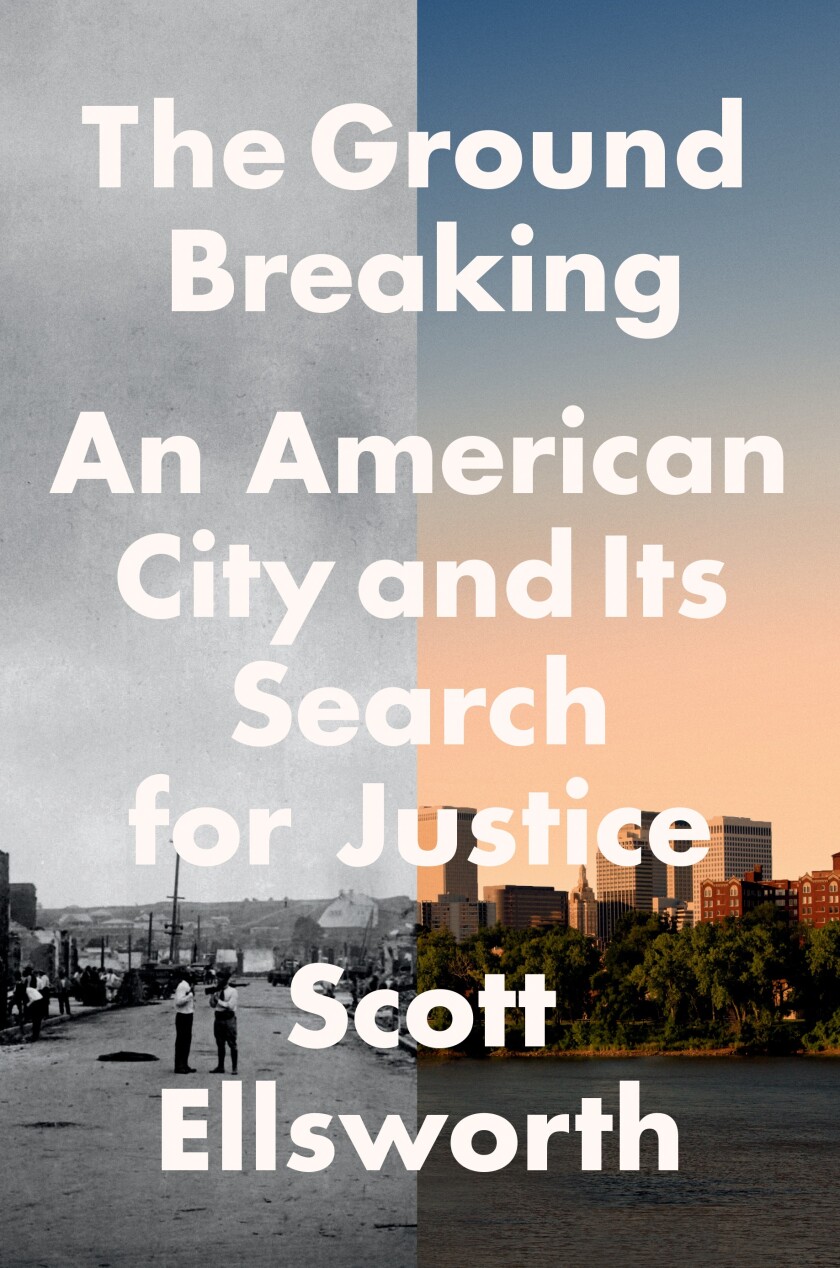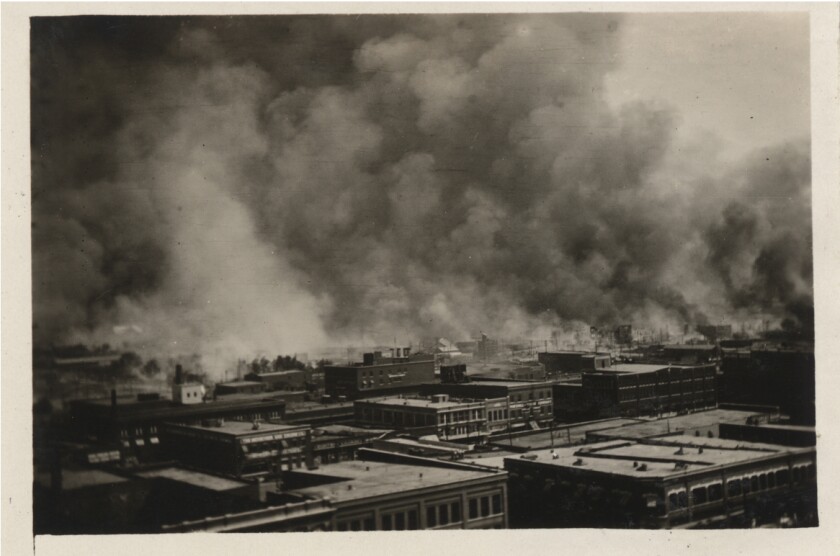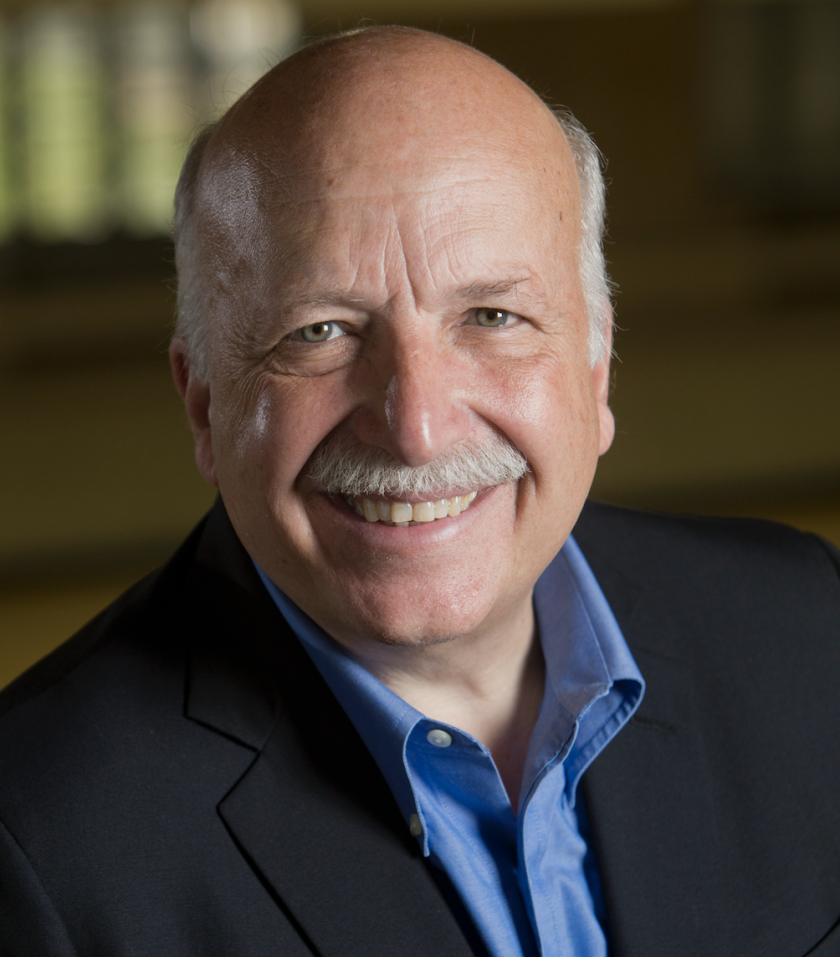On the Shelf
The Ground Breaking: An American City and Its Search for Justice
By Scott Ellsworth
Dutton: 336 pages, $28
If you buy books linked on our site, The Times may earn a commission from Bookshop.org, whose fees support independent bookstores.
Exactly 100 years ago this month, the white citizens of Tulsa, Okla., used the flimsiest of excuses to try and lynch a young Black man. After Black residents, most from the city’s flourishing Greenwood community, rushed to the courthouse to stop the mob, armed white people prodded by the media and the government obliterated Greenwood — dropping bombs from planes, burning blocks to the ground and slaughtering an unknown number of residents, many of whom were dumped in mass graves.
Afterward, those in power tried to wipe the event from the public record, cutting out newspaper articles from archives and removing government documents. A generation later, most young white residents did not even know the event had occurred.
“It’s like teenagers in Manhattan today not knowing that 9/11 ever happened,” says Scott Ellsworth, a Tulsa native, whose 1982 book “Death in a Promised Land” helped shatter the silence. (Black journalists like Don Ross had written about it more than a decade earlier, but those stories were largely only seen in the Black press.)
Ellsworth never let go of the story. He wrote and edited most of the 300-page Tulsa Race Riot Commission Report, created around the 75th anniversary in the 1990s. And when the city decided to revive its long-abandoned search for mass graves, Ellsworth not only joined in; he wrote a new book inspired by the effort.
“The Ground Breaking: An American City and Its Search for Justice” recounts the events that began May 31, 1921, but its main focus is on the century that followed: the long-lasting trauma; efforts to rebuild and to finally confront the past; and most recently the fight for reparations and the search for bodies.
“It’s been a long process,” Ellsworth says. “Those survivors really kept the story alive. I just try to keep their efforts going.” He spoke by phone recently with The Times about America’s haunted past and how Tulsa finally found its graves.

Why does this story still matter now?
We’re living in the age of re-evaluation — statues are coming down; buildings are being renamed. This is a book about Tulsa but I also hope it encourages others to think about the pasts of their hometowns: what they know and what they don’t know, what has been ignored and what needs to be focused on more.
Our history is what it was. Period. You have to know the bad and the good. Tulsa, as [historian] John Hope Franklin said, lost its sense of honesty for half a century — and it’s finding it again. This is a difficult process. There’s a scene in my book where an elderly white woman comes up while we’re searching for the mass graves and says, “It’s all just rumor anyway, we don’t really know what happened then.”
But while there are still some things we don’t know, including how many people died, we know a whole lot about what happened and we can describe it with a fair degree of accuracy.
How much has it meant to the survivors and their descendants that the truth has been exposed and remembered?
The Riot Commission was very important for them. Those people were almost all children in 1921 so they were different than the survivors I interviewed in the 1970s. The story had been suppressed in Greenwood, the way Holocaust survivors or World War II veterans didn’t talk about their experiences. Once there was a breakthrough, it allowed people to start talking about their experiences. There were descendants who didn’t really hear about this until the 1990s.
Did you ever give up hope of finding the mass graves?
We had made this big effort 20 years ago and were shut down. I didn’t know if it would happen in my lifetime. In the spring of 2019, Tulsa restarted the search for graves and the new deputy mayor asked me to help. I was one of the few people around who knew how the massacre had been covered up.
The plan to dig last spring was shut down because of the pandemic. Then in July, we found out the ground radar did not work as well as we thought. It was one reason we dug in the Sexton’s Site in Oaklawn Cemetery in July. That turned out to be a landfill. By the second dig, in October, the city needed a win. The mayor put a lot of money into this — he is a Republican and caught a lot of flak. Then we found this mass grave in Oaklawn. We’re going to start exhuming that on June 1, which will take several weeks. But it’s not going to stop there — we have some other sites in which I think it’s very likely massacre victims are buried.

Greenwood on fire, Tulsa, June 1, 1921. From “The Ground Breaking” by Scott Ellsworth.
(Francis Schmidt/McFarlin Library/University of Tulsa)
Why is it important to keep looking?
These people were thrown away. Their loved ones were being held under armed guard and never knew what happened. Those families were always left with a big hole. This was a great injustice and it’s imperative for us today to see if we can identify any of the people and bring them back home with honor. The Black veterans who went down to the courthouse to stop the lynching are in these graves, and I consider those people to be American heroes.
What about the fight over reparations?
That’s a conversation our country is going to be having for a while but it’s a very complicated subject. Reparations are extremely unpopular among white Oklahomans. I fully support reparations for the two survivors left and their descendants. The massacre is a definable event and we can figure out who these people are. They were let down by their city, by their state, by the federal government. We owe them something. The state lost a great opportunity 20 years ago: There were only about 125 survivors at that point and even $10,000 each would have meant the world to them. Instead, they got gold-plated medals.
Republicans in Oklahoma recently passed an education bill restricting the teaching of “critical race theory.” As a result, Governor Kevin Stitt was removed from his ceremonial role on the 1921 Tulsa Race Massacre Centennial Commission. Is all this damaging or political theater?
I’m not on the Commission so I can’t speak for them. But all of these new laws are misguided. Oklahoma schoolchildren are neither snowflakes nor robots. They can handle learning about the Tulsa race massacre, slavery, the Trail of Tears and other difficult topics, and we do them a disservice by shielding them from the truth.

Scott Ellsworth, author of “The Ground Breaking: An American City and Its Search for Justice.”
(Jared Lazarus)
Do the ever-widening divisions in America make any progress even harder?
Tulsa had the single worst incident of racial violence in American history and buried it. Today Oklahoma is the reddest of the red states — the only state where not a single county voted for Obama in either election and every county voted for Trump in both of his.
Yet what we’re doing in Tulsa is unprecedented: It’s the first time a unit of the American government has purposefully gone out to locate, recover and re-bury with honor the remains of victims of racial violence. So the great irony is Tulsa may be leading the way in showing the country how to do this.
In the ‘70s, city employees would tell me, “I don’t know where this is, come back tomorrow” and blow you off. In the ‘90s, people would provide you with stuff, but they were not happy about it. Now we’ve got city workers bending over backward so we can do whatever we need to do. That’s a sea change.
appId : '134435029966155',
xfbml : true, version : 'v2.9' }); };
(function(d, s, id){ var js, fjs = d.getElementsByTagName(s)[0]; if (d.getElementById(id)) {return;} js = d.createElement(s); js.id = id; js.src = "https://connect.facebook.net/en_US/sdk.js"; fjs.parentNode.insertBefore(js, fjs); }(document, 'script', 'facebook-jssdk'));
Stay connected with us on social media platform for instant update click here to join our Twitter, & Facebook
We are now on Telegram. Click here to join our channel (@TechiUpdate) and stay updated with the latest Technology headlines.
For all the latest Entertainment News Click Here
For the latest news and updates, follow us on Google News.
